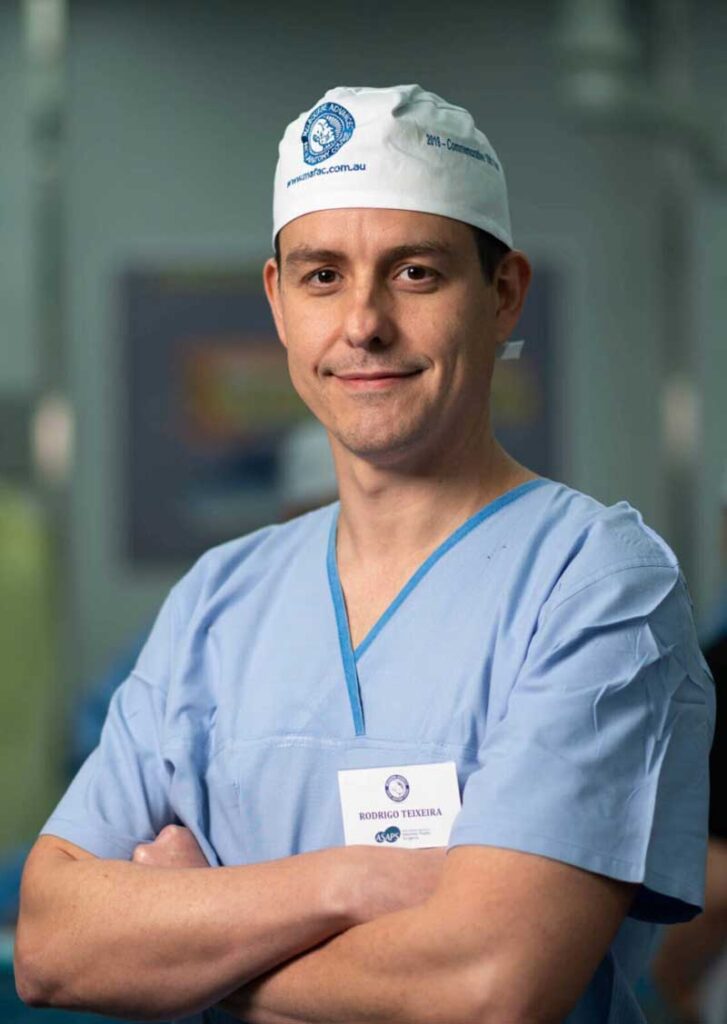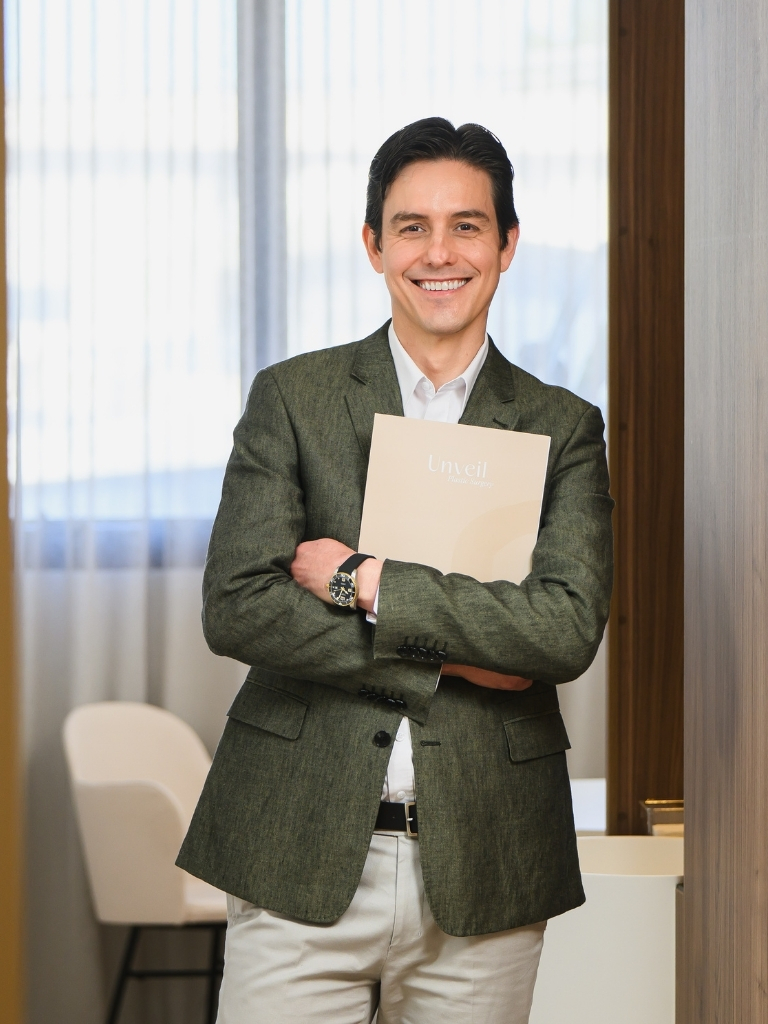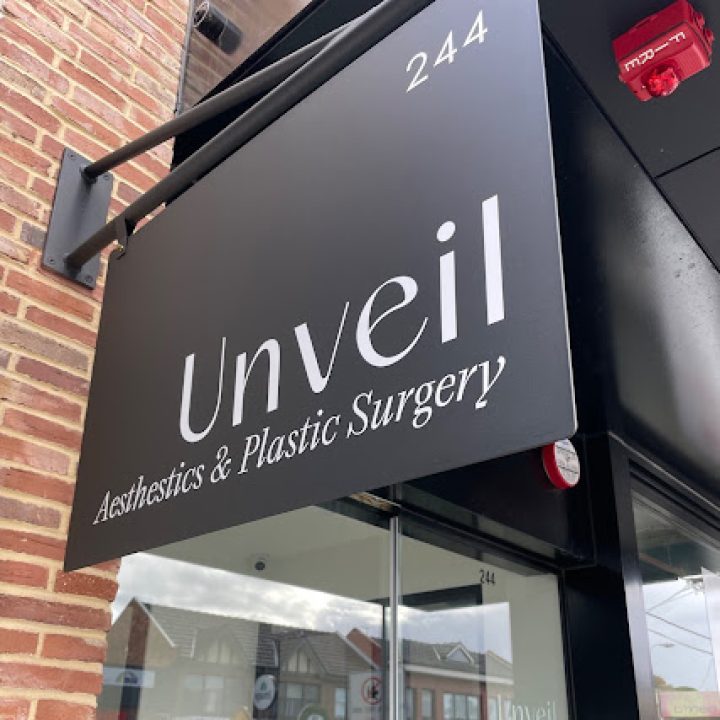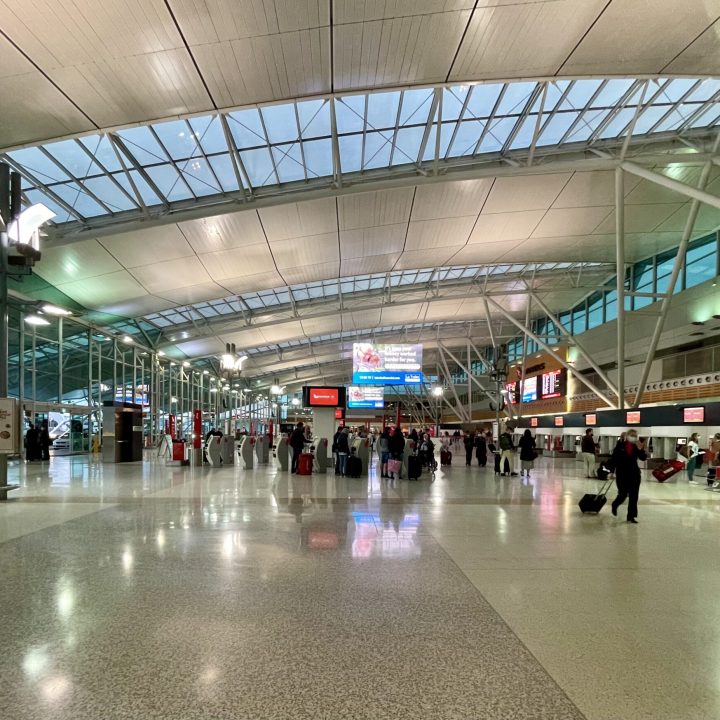Breast Surgery in Melbourne (Mammaplasty)
Dr Rodrigo Teixeira (FRACS) is a Specialist Plastic Surgeon offering breast surgery in Melbourne, including cosmetic and functional procedures. Each treatment is individually planned to restore comfort, balance, and proportion in harmony with the patient’s anatomy and goals.
About Breast Surgery (Mammaplasty)
Breast surgery, or mammaplasty, encompasses procedures that reshape, reposition, or restore the breasts for aesthetic, functional, or reconstructive reasons. It may be considered by individuals experiencing changes after pregnancy, breastfeeding, weight fluctuation, or ageing, or by those seeking to address asymmetry, discomfort, or developmental differences.
Dr Rodrigo Teixeira (FRACS) is a Specialist Plastic Surgeon in Melbourne, experienced in both cosmetic and functional breast procedures. His approach combines an appreciation for proportion and form, aiming to refine breast shape, size, and symmetry in a way that complements the patient’s body. Each plan is developed with consideration for the individual’s goals, lifestyle, and physical needs, supporting outcomes that balance aesthetic refinement with comfort and function.
Breast Augmentation (Implant or Fat Transfer)
Many patients describe feeling that their breasts never developed fully or, have lost volume, particularly after pregnancy, breastfeeding, or changes in weight. Breast augmentation, or augmentation mammaplasty, may help restore fullness and balance between the chest and body proportions using implants or fat transfer.
During consultation, Dr Rodrigo Teixeira performs a physical assessment to evaluate breast dimensions, tissue quality, and chest wall anatomy. Implant type, size, and pocket placement are selected according to the patient’s frame, tissue support, and goals. Fat transfer may also be used to enhance contour or smooth transitions between tissue and implant.
The aim is not simply to increase size, but to achieve proportional enhancement that complements the body and restores harmony. Each plan is developed with consideration for long-term tissue stability and alignment with the patient’s lifestyle and aesthetic preferences.
Breast Lift (Mastopexy)
Patients often describe their breasts as deflated or lower than before, noticing that bras or clothes no longer fit as they once did. A breast lift, or mastopexy, restores shape and position by tightening the skin envelope and repositioning the breast tissue and nipple for a more supported contour.
During consultation, Dr Rodrigo Teixeira evaluates skin elasticity, nipple position, and remaining volume to determine the most suitable technique. Some patients may benefit from combining a lift with augmentation to restore volume or with reduction to refine proportion and symmetry.
This procedure aims to restore balance and projection while maintaining tissue support and softness. The goal is a breast shape that sits naturally with the body and reflects the patient’s stage of life, anatomy, and expectations.
Reduction Mammoplasty (Breast Reduction)
Women seeking breast reduction often report neck or back pain, shoulder grooving, skin irritation, or difficulty finding clothing that fits comfortably. For others, the motivation is to feel lighter and more balanced, both physically and in appearance.
Breast reduction, or reduction mammaplasty, decreases breast volume and reshapes the tissue to improve comfort and proportion. During consultation, Dr Rodrigo Teixeira discusses areas of discomfort, assesses skin quality and tissue distribution, and plans the procedure to relieve symptoms.
This operation can also ease emotional and postural strain, allowing greater comfort and confidence in daily life. When clinically indicated, breast reduction may qualify for Medicare or private health rebates, subject to individual eligibility criteria.
Male Breast Reduction (Gynaecomastia Surgery)
Men considering surgery for gynaecomastia often describe a sense of chest fullness or contour irregularity that does not improve with exercise or weight loss. This condition may be due to excess glandular tissue, fat, or skin, and can cause self-consciousness or discomfort in clothing and physical activity.
During consultation, Dr Rodrigo Teixeira assesses the underlying tissue composition and skin elasticity to determine the most appropriate approach. Surgical options may include excision of glandular tissue, liposuction, or skin tightening when needed. Incisions are planned to minimise visibility and maintain natural contour and symmetry.
The goal of treatment is to create a flatter, more defined chest that fits comfortably with the patient’s body shape and lifestyle. Recovery and outcomes vary depending on the degree of correction required, and all decisions are guided by proportion, safety, and long-term stability.

Risks and Complications
All surgery involves some degree of risk, which varies according to individual anatomy, health, and the type of procedure performed. Temporary bruising, swelling, and discomfort are common during the early recovery period.
Some patients may also experience mild changes in nipple or skin sensation that gradually improve with healing. Less common complications can include bleeding, infection, delayed wound healing, or visible scarring. Asymmetry, contour irregularities, or changes in nipple position may occur despite careful planning.
Procedures involving implants carry additional risks such as capsular contracture, implant rupture, or malposition, which may require further treatment or revision. Rare but recognised conditions include breast implant-associated anaplastic large cell lymphoma (BIA-ALCL) and breast implant illness (BII), both of which are discussed during consultation.
Patients are provided with written information on implant types, safety data, and the expected lifespan of implants to support informed consent and long-term monitoring.
Surgery and Recovery
Recovery following breast surgery varies between individuals and depends on the type of procedure performed. Swelling, bruising, and mild discomfort are expected during the first one to two weeks and usually lessen with time. Most patients resume light activities within this period, though complete recovery and tissue settling may take several months.
Follow-up appointments with Dr Rodrigo Teixeira and his team are scheduled to review healing, track progress, and provide continued support. Dressings and support garments are typically worn for several weeks to maintain contour and comfort while tissues adapt. Patients are encouraged to stay in contact with the clinic throughout their recovery for reassurance and guidance.
Optional recovery and scar management treatments are available at Unveil Aesthetics when clinically appropriate. Detailed written aftercare instructions are provided before surgery, outlining wound care, medication, and activity recommendations. Healing timelines differ for each person and are reviewed during follow-up visits to ensure recovery is progressing as expected.
About Dr Rodrigo Teixeira
Dr Rodrigo Teixeira (FRACS) is a Specialist Plastic Surgeon (AHPRA MED0001650480) based in Melbourne. His practice includes aesthetic and reconstructive breast surgery, with a focus on proportion, structure, and balance. He performs procedures such as augmentation, reduction, and lift surgery, tailoring each plan to the individual’s anatomy and goals.
Dr Teixeira completed advanced fellowship training in Aesthetic Plastic Surgery, Craniofacial and Cleft Surgery, and Burns, providing a broad foundation across reconstructive and aesthetic disciplines. His approach combines surgical planning with attention to detail, safety, and long-term tissue support.
He is a Fellow of the Royal Australasian College of Surgeons (RACS) and an active member of the Australian Society of Plastic Surgeons (ASPS), the Australasian Society of Aesthetic Plastic Surgeons (ASAPS), and international associations.
Learn more about Dr Rodrigo Teixeira and his qualifications.
Mammaplasty FAQs
The decision depends on your anatomy, goals, and symptoms. During consultation, Dr Teixeira discusses whether augmentation, lift, reduction, or a combination best addresses your concerns, explaining what each can and cannot achieve.
Scars are positioned to follow the natural folds of the breast and usually fade over time. However, their placement and extent depend on the chosen procedure and individual healing. Scar management options are discussed before and after surgery.
Most patients resume light activities within one to two weeks. Swelling and firmness gradually subside, but tissue settling continues for several months. Recovery timelines vary, and follow-up appointments monitor progress.
Breast implants are not lifetime devices. They may require replacement or removal in the future due to changes in the implant or breast tissue. Regular reviews and imaging help monitor their condition.
Some procedures, such as breast reduction or mastopexy, may attract a Medicare item number when they meet medical criteria. Coverage depends on your insurance policy and eligibility, which can be clarified before surgery.
Gentle walking is encouraged early in recovery. More strenuous activities, including upper-body or impact exercise, are usually delayed for four to six weeks or until cleared by Dr Teixeira.



